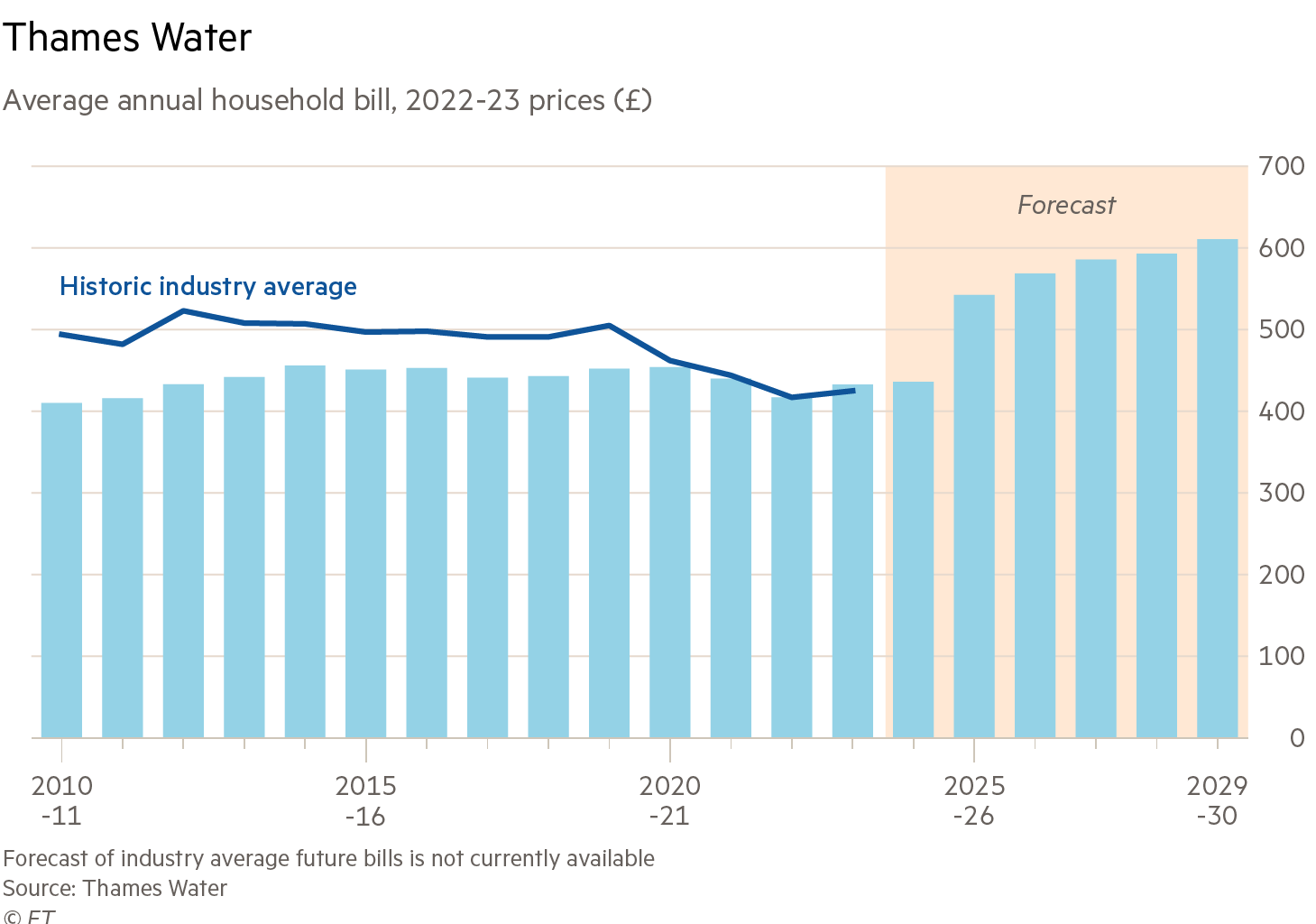Unlock the Editor’s Digest for free
Roula Khalaf, Editor of the FT, selects her favourite stories in this weekly newsletter.
If nothing else, Thames Water’s chair Sir Adrian Montague can be commended for courage. The City veteran agreed to oversee Britain’s biggest privatised water utility last July. Since then, fears over its financial health have reached feverish levels.
Now the question is whether Thames, with its labyrinthine structure and debt load of £18.3bn, can avoid collapsing into public hands.
The next potential trigger is a £190mn lending facility at its ultimate parent company, Kemble Water. It requires repayment in April.
Kemble had cash of £20mn at the end of September, estimates Moody’s. Although it has a separate £150mn revolving credit facility, interest payments this year are estimated at £80mn-£85mn. Kemble requires dividends from Thames Water’s operating entity or a fresh equity injection from shareholders to avoid default, if lenders do not extend the loan.
There are no easy options here. First, water regulator Ofwat is examining whether a £37.5mn dividend Thames made in October breaches its licence arrangements. Ofwat lacks the power to claw back payments, although it can issue a fine. Any sign that it will become harder for Thames to pay dividends is a red flag for shareholders and creditors alike.
Second, shareholders — who include Canadian pension fund Omers — want guarantees that Ofwat will allow them to make what they argue are fair returns before injecting further equity. This would involve allowing water bills to rise by 40 per cent by 2030 — a hard sell politically. Thames needs a £750mn equity injection by April 2025 and a further £2.5bn by 2030 to fund its current investment plans and manage assets.
But if Kemble defaults, Thames doesn’t necessarily follow. The ringfenced, regulated company is asset-rich, with £3.5bn of liquidity at the end of September. It can call on £550mn of undrawn facilities in emergency circumstances.
Thames would need new investors — a difficult feat but not without precedent. Another indebted rival, Southern Water, secured a new backer in 2021. Frankly, Thames’ board lacks the restructuring nous to handle this end-game. Montague at least relinquished the chair role at Kemble in February. That should allow him to war-game Thames’ survival were Kemble to fall.
Without fresh equity Thames would have to slash costs and investment and focus squarely on cash preservation. That in turn would threaten to push its (already dismal) service levels below the standards required by its licence. The regulator could then push it into a special administration regime — a form of temporary nationalisation.
Near-term, however, this would require a previously supine regulator to force the issue. Thames can still avoid nationalisation.
Lex is the FT’s concise daily investment column. Expert writers in four global financial centres provide informed, timely opinions on capital trends and big businesses. Click to explore
Read More: World News | Entertainment News | Celeb News
FT
